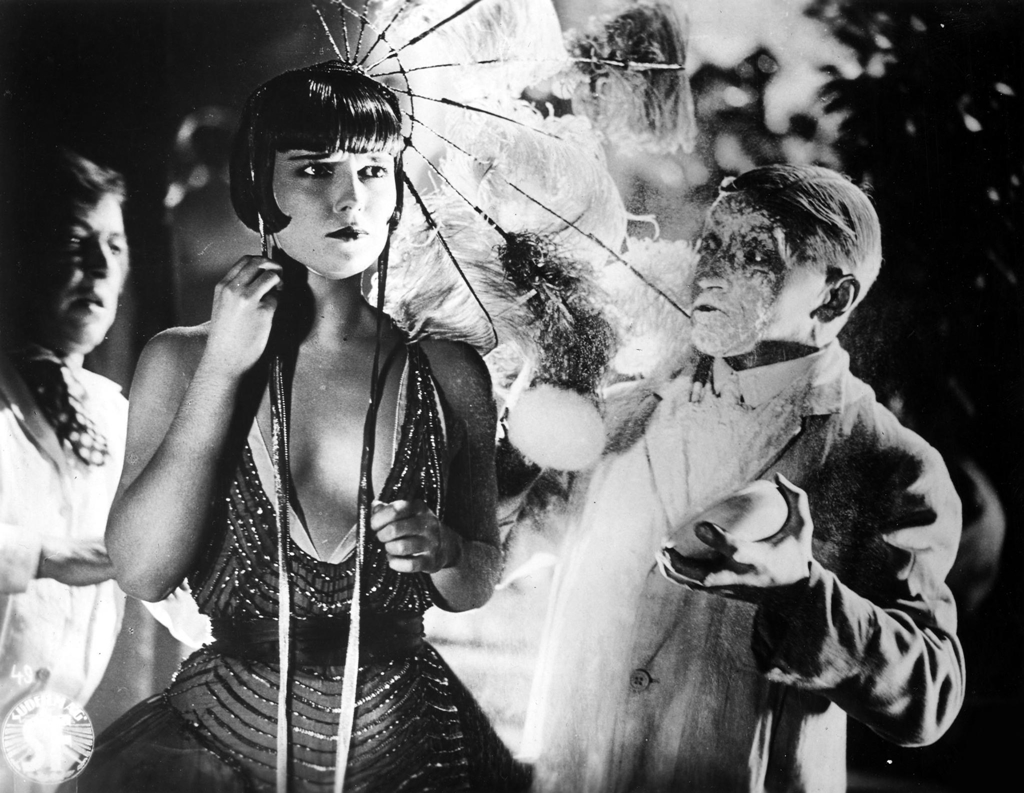




Dir.: G.W. Pabst; Cast: Louise Brooks, Fritz Kortner, Franz Lederer, Carl Götz, Alice Roberts, Daisy d’Ora, Alice Roberts; Germany 1928, 135 min.
Based on two plays by the German playwright Frank Wedekind (Earth Spirit/Pandora’s Box) there had been already a stage, screen and musical version of the story, and Pabst was set to cast Marlene Dietrich in the title role of his own version, having failed to find his ‘Lulu’.
Luckily for him, and for the millions who have watched the feature, his first choice of 22 year-old Louise Brooks (a trained dancer) telephoned just in time from Hollywood to accept the role. Pabst had seen her playing a circus artist in Howard Hawks’ A Girl in Every Port, and Paramount had ignored his request to borrow her. Only after she quit Paramount ((“just for the hell of it”), did Bud Schulberg tell her Pabst had offered her the part. And ten minutes later, when she cabled Pabst her agreement – Marlene Dietrich was waiting in the director’s office.
Lulu (Brooks) is a modern femme fatale and a naïve little girl all rolled into one. Full of allure and sultry seductiveness. Her first pimp Schigolch (Götz) is hiding on the balcony of her flat when her lover Dr. Peter Schön (Kortner) arrives. The editor of a big newspaper he is engaged to the aristocratic beauty Charlotte (O’Ora). After spotting Schigolch he is delighted to discover that Lulu wants to star in a variety show, helped by Schigolch and the strongman Rodrigo Quast. But on the evening of the first night, Lulu throws a tantrum: she is not going to perform in front of her lover’s fiancée.
When Lulu seduces Schön, Charlotte and Schön’s adult son Alwa (Lederer), who is secretely in love with Lulu, make their way into the backroom of the theatre. The editor has no choice now – he has to marry Lulu.
On the night of their wedding, there is a drunken scene on the couple’s bed involving Quastand Schigolch. The newly wed husband asks Lulu to shoot herself, to save him from becoming a murderer – but in the struggle for the gun he is killed.
Lulu is found guilty of manslaughter, but escapes with Alwa, Schilgoch and Quast. The three of them soon run out of money, ending up penniless in London, where Lulu meets her end at the hands of Jack the Ripper.
Not only did Pabst introduce Louise Brooks as the modern sex beast, he also casts, perhaps for the first time in film history, a lesbian protagonist: Countess Anna Geschwitz( Roberts), who is, like all men, equally smitten by Lulu. But she is no wallflower – managing to murder Quast, who wants to give Lulu away to the police for money.
Pandora’s Box was not successful at the box office, even Kracauer is dismissive of the piece believing Wedekind’s plays to be “really essays”’, lifeless and lacking visual strength. In the USA, the ending was changed: instead of being murdered, Lulu joins the Salvation Army.
Brooks would stay in Europe, starring next in Pabst’s Diary of A Lost Girl, before returning to the USA, where she ended her screen career in 1938, to become a writer. Pabst himself would never reach the same heights, returning to Nazi Germany in 1939, and ruining his reputation. But Pandora’s Box, the result of chance and the unique historic constellation of culture in the Weimarer Republic, will live on forever! AS
NOW ON SUBSCRIPTION to BFI PLAYER 16 December